You’ve gotta wonder about the economic literacy of the Victorian Government.
After the ABS released the state accounts for the year ended June 2016 on Friday, Victoria’s Treasurer Tim Pallas, released the following statement trumpeting the result:
The latest ABS figures show that for the 2015-16 year, Victoria’s gross state product (GSP) grew by a strong 3.3 per cent, up from 2.6 per cent for 2014-15, exceeding the budget estimate of 3 per cent and well above the national GDP number of 2.8 per cent…
The 2015-16 result was driven by strong growth in dwelling investment (11.1 per cent), underlying business investment (4 per cent) and household consumption (3.2 per cent)…
“For the last two years we’ve delivered on the things that matter most to people – growing a stronger economy and creating more jobs for Victorians.”
“Our economy is now growing faster than it has in almost a decade – and in two years of putting people first, we have created more than 184,000 jobs.”
Sadly, if you dig below the headline result there is little to celebrate if you are a Victorian.
In recent years, Victoria has led the nation in population growth (see next chart).
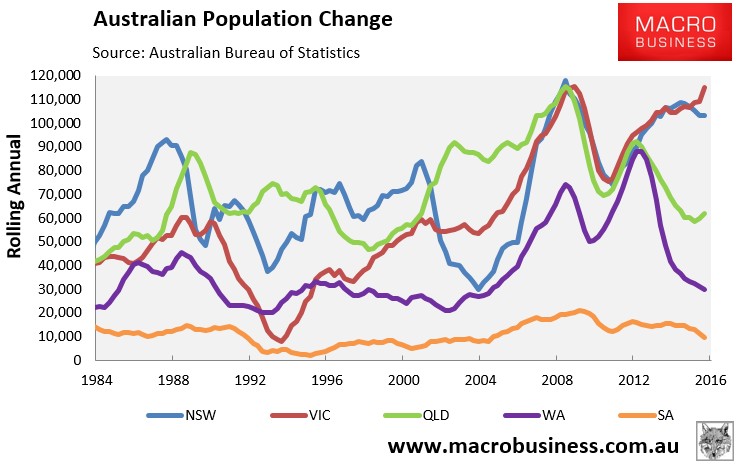
And in the decade to June 2015, Melbourne added an incredible 832,000 people – the largest population increase out of Australia’s capital cities (see next chart).
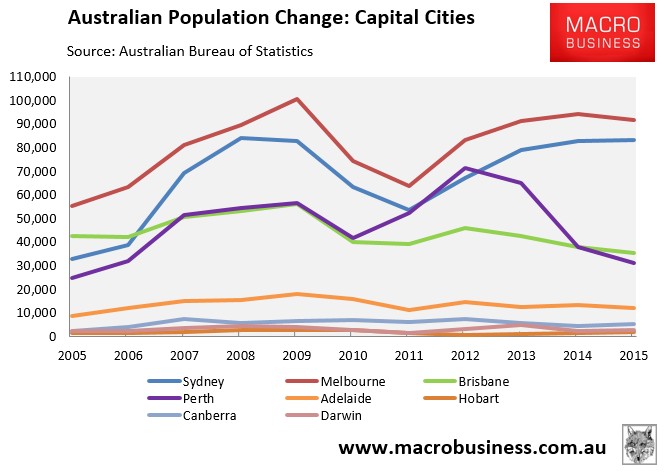
Moreover, official projections have Melbourne’s population increasing by around 1,850 people per week (97,000 people per year) for the next 35 years!
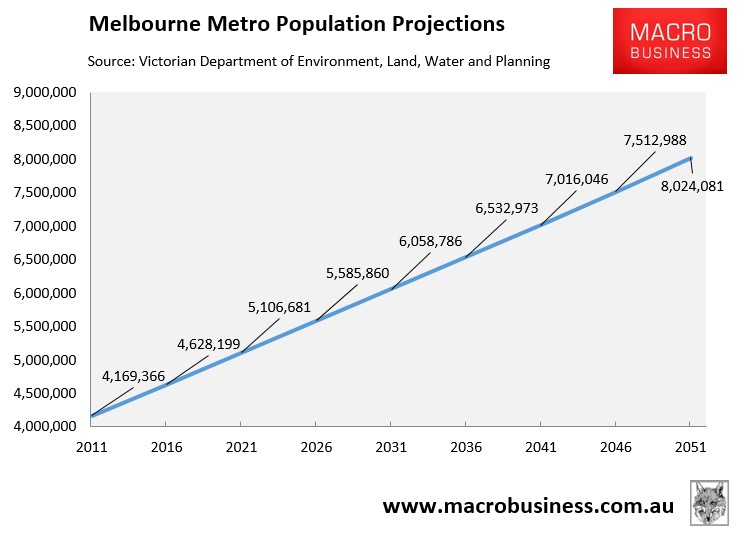
This rampant population growth has created all manner of problems for Melbournians, from worsening congestion to deteriorating housing affordability. Importantly, it has also masked the poor performance of the Victorian economy.
Once population growth is taken into account, Victoria’s real GSP grew by 1.4% in the year to June 2016, in line with the national average (see next chart).
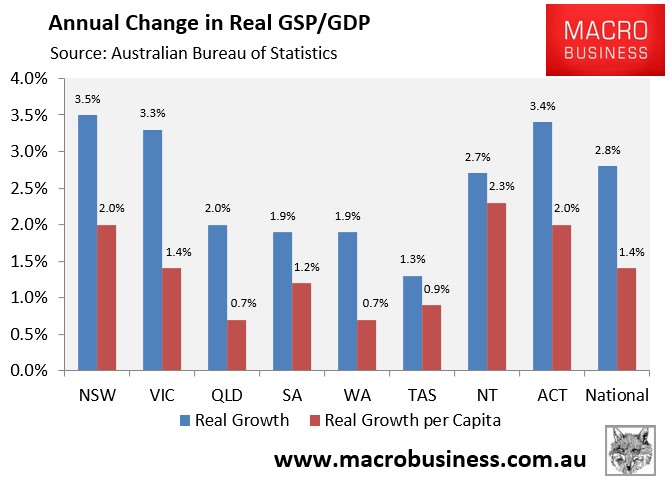
However, since the onset of the Global Financial Crisis (GFC) in 2008, per capita gross state product (GSP) in Victoria has risen by a pathetic 0.8% (see next chart).
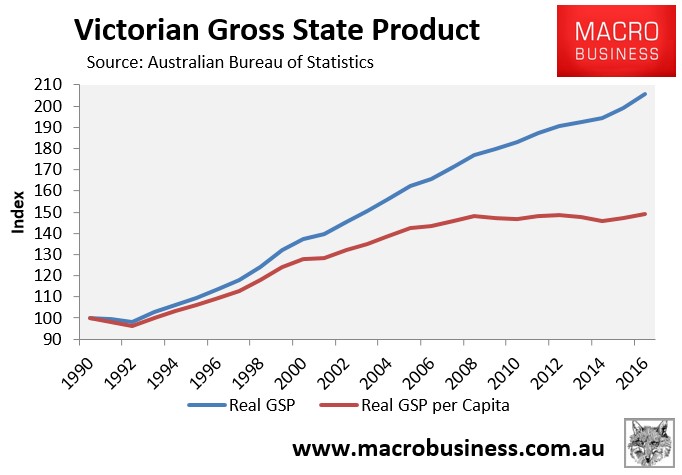
Worse, Victoria has experienced the lowest increase in per capita GSP in the nation since the GFC (see next chart).
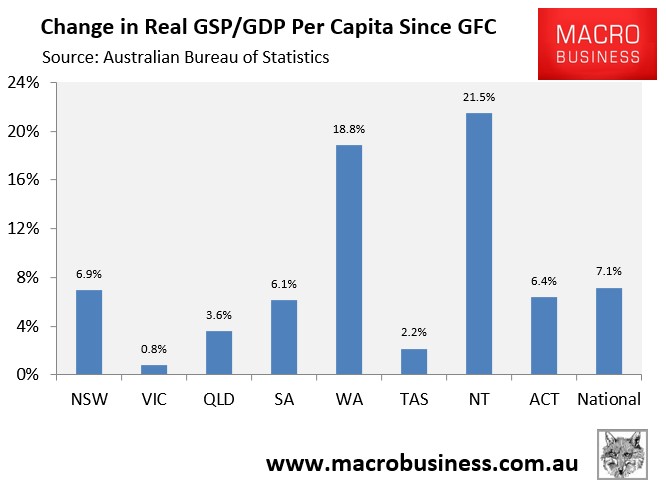
So what has been happening in Victoria is that the economic pie has grown due to population growth, but everyone’s slice of that pie has remained stagnant! Some economy, hey?
But wait, it gets worse. Victoria also has the lowest per capita gross disposable income on the mainland, only beating out lowly Tasmania (see next chart).
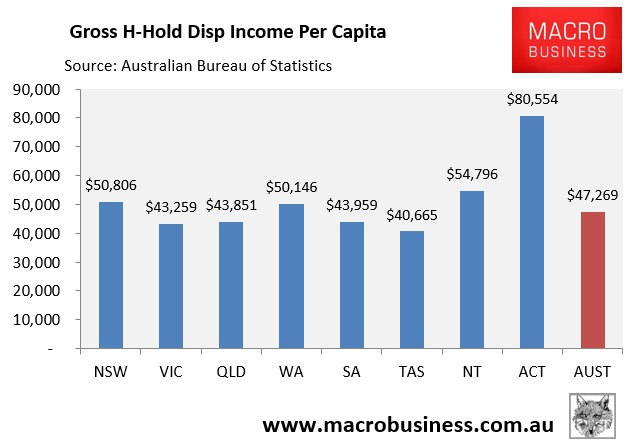
What should become abundantly clear is that Victoria is running a ponzi economy based on endless population growth (immigration), which in turn has juiced its services industries (think cafes, universities and financial services) and the housing construction industry (see below chart).
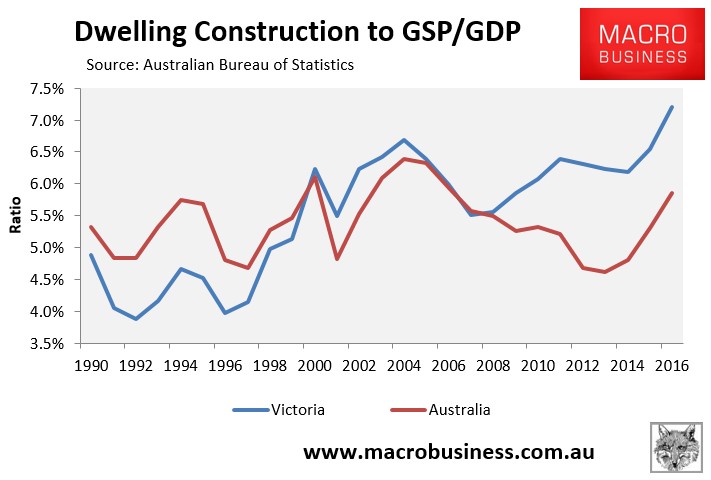
Such a growth strategy is like a dog chasing its tail: as soon as the population growth stops, so does the growth in services/construction that it creates, raising a big question mark over the sustainability of the Victorian economy.
Further evidence of this false economy is found in Victoria’s trade performance. Exports have recorded minimal growth over the past 14 years, whereas imports have more than doubled. Accordingly, the state’s trade deficit has blown out to a whopping $47.5 billion in the year to June 2016 (see below charts).
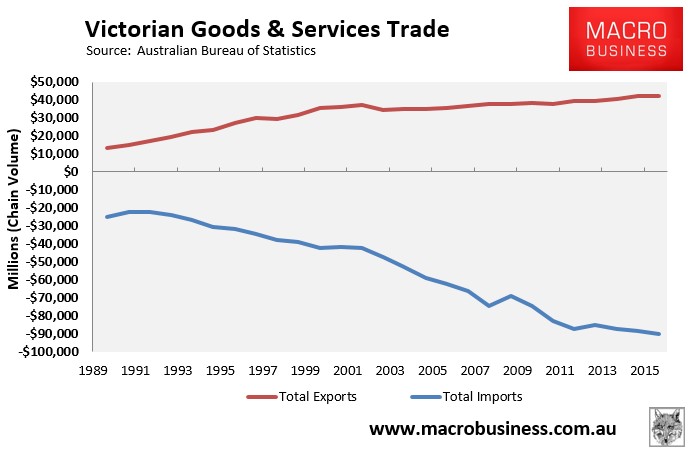
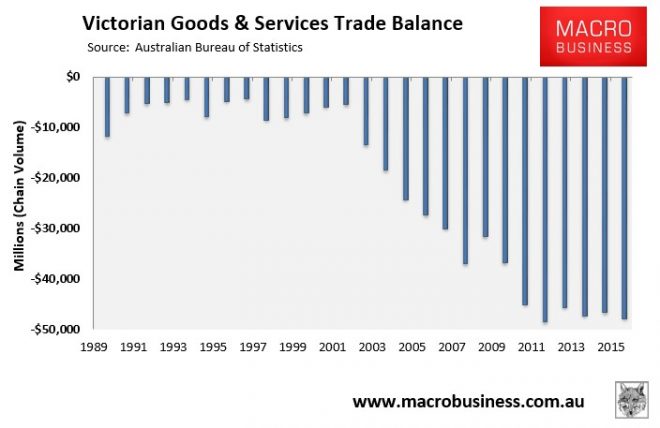
This data suggests that Victoria (read Melbourne) is effectively sucking financial resources from the mining states in order to support its population ponzi.
To sum up, Victoria (read Melbourne) is operating a ponzi economy that is growing for growth’s sake, pushing against infrastructure bottlenecks, and reducing the living standards of the incumbent population via rising congestion, reduced amenity, and deteriorating housing affordability.
How does the Government propose to create an economy that is based on real and sustainable growth, which actually improves the living standards of the incumbent population?

